- Home
- Arthur Conan Doyle
The Complete Sherlock Holmes, Volume I (Barnes & Noble Classics Series) Page 4
The Complete Sherlock Holmes, Volume I (Barnes & Noble Classics Series) Read online
Page 4
On a cheerier note, The Sign of Four contains what I think is the most impressive of all Holmes’s displays of logic, the series of deductions about Watson’s watch. The scene is a sideshow, of course, as it plays no part in the case to follow, but like many scenes in the coming stories, it dazzles us with its brilliance while establishing another link between Holmes and Watson. It also manifests some subtle traits possessed by each man. Watson reveals his emotional side here. He is upset because he has concluded that Holmes has been snooping into his family background. A gentleman wouldn’t make such inquiries. Holmes, of course, has done no such thing, but we can’t help but think, after we get to know Holmes better, that had doing so helped him solve some crime, he wouldn’t have hesitated. Watson believes in the conventional Victorian code of conduct. He is shocked at even the suggestion that his friend could disregard it. By the end of their adventures, he will have been so influenced by Holmes that he’ll throw smoke-rockets into apartments, break into houses, attempt to steal private documents, and even let murderers go. The Adventures of Sherlock Holmes could be subtitled and the Education of Dr. John H. Watson.
As a result of the popularity these novels enjoyed, Conan Doyle decided to write shorter tales that could be published in a literary magazine. He first penned “A Scandal in Bohemia” in April 1891, sending it to his agent to shop it around to the magazines. The Strand, a new publication, accepted it without fanfare, but when Conan Doyle’s agent sent them two more stories, “The Red-headed League” and “A Case of Identity,” the magazine’s editors, realizing they had something special, asked Conan Doyle for more. After he submitted “The Boscombe Valley Mystery,” Conan Doyle asked for an increase in the price the magazine paid him for the stories, from £25 to £35 per story. The grateful editors immediately agreed, so Conan Doyle wrote the fifth and sixth stories, “The Five Orange Pips” and “The Man with the Twisted Lip.”
Conan Doyle conceived of his six stories as a series, to be run in sequence. Serialized works in the past had been chapters from a single continuous work, either a novel or a long story. But Conan Doyle felt that serializing long stories in magazines was a mistake, because a reader who missed one issue would lose interest. He saw that if he made each story independent, “while each retained a connecting link with the one before and the one that was to come by means of its leading characters,” it didn’t matter if a reader missed an episode or two. “In this respect, I was a revolutionist, and I think I may fairly lay claim to the credit of being the inaugurator of a system which has since been worked by others with no little success” (Tit-Bits, December 15, 1900).
The first Strand stories were published in 1891. It took Conan Doyle about a week to write each one. You may have noticed that “The Red-headed League,” published second, mentions a character who appears in “A Case of Identity,” which was published third. They were written in reverse order, but through either some slipup at the magazine or a calculation that “The Red-headed League” was the stronger story and the fledgling magazine needed a hit as soon as possible, they were published out of order. The first few stories were a smashing success, and the editors begged Conan Doyle for another set of six in October 1891. Already tiring of his detective, Conan Doyle refused. In a letter to his mother he wrote that he was not inclined to continue the series, but as a lark would ask the publisher for £50 per story, however long or short he wanted to make them, and see what they would say to that. To his surprise the Strand agreed in a flash.
While writing the next six stories, Conan Doyle wrote in a letter to his mother on November 11, 1891, “I think of slaying Holmes in the sixth & winding him up for good & all. He takes my mind from better things.” Madame Conan Doyle urged him not to do anything so silly. She even sent a suggestion for the plot of a new Holmes story. Dutiful son that he was, Conan Doyle modified her plot suggestion into “The Adventure of the Copper Beeches” and let his creation live to detect another day.
The Holmes juggernaut got an important boost from the policy of the Strand to include illustrations with all its stories. To illustrate the Holmes stories, the editor chose Sidney Paget (1860-1908), probably by mistake; the editor had actually wanted his brother, Walter, who was already famous for illustrations in The Illustrated London News. Sidney, however, rose to the challenge. He based his drawings of Holmes on the features of his brother, Walter. He also included a couple of things not mentioned in the stories that nonetheless have come to be emblematic of the great detective. In his drawings for “The Boscombe Valley Mystery” and again in “Silver Blaze,” Paget drew Holmes wearing a deerstalker cap and a traveling cape. In fact, these items don’t exist in the stories; Paget added them because he himself liked to wear them. His drawings were very popular. They defined the image the English public associated with the name Sherlock Holmes. Later Ellie Norwood, who first portrayed Holmes in film, was popular to some degree because he resembled the Paget drawings.
Another feature strongly associated with Holmes that isn’t in the books is from America. The pipe with the long, curved stem that many of us think of as always drooping from Holmes’s jaw was unknown in England before the turn of the century. It first appeared because the American actor William Gillette, who made a career of playing Holmes on the American stage and then later in seven films, couldn’t keep a straight pipe in his mouth when he talked. He had better luck with a curved stem, so it was substituted for the kind Conan Doyle had described. Gillette’s films were popular, and his likeness was the one used by the American illustrator Frederic Steele for the Holmes stories published in Collier’s Magazine , so the image stuck.
While this essay cannot discuss every story in this volume, it will examine the details of a few that present some interesting features about Holmes, Watson, the woman, the villain, and Conan Doyle as a writer. There’s no better place to begin than with the first short story, “A Scandal in Bohemia.” After the sensationally gruesome murders of the first two novels, it may come as a surprise that Conan Doyle began his series of short stories with one that not only has no murder, but no crime at all, not even a mystery. It sets a problem for Holmes to solve: how to get the photograph of Irene Adler and the king of Bohemia out of the lady’s possession. The story makes little sense when closely examined. The king wants the return of a photograph from Irene Adler that he thinks will compromise his forthcoming marriage, while Ms. Adler, who is about to get married herself, would only compromise herself if she showed it to anyone. Had Holmes not been called into the case, the outcome would have been exactly as it transpired anyway.
One wonders what was the point of the story? Could it have been to put aside any suspicions that Holmes is homosexual? We’re told he always refers to Irene Adler as “the woman,” with the implication that he couldn’t be satisfied with any other woman after his encounter with her. But if we look closely at what attracted him to her, we note some surprising things. First, though Holmes, like all the men around Irene, can’t be immune to her beauty, he is far more taken by the qualities of mind and spirit she displays during his attempt to trick her. She has managed to keep this photograph hidden so well that the king’s agents couldn’t find it when they twice searched her lodgings nor when they waylaid her while she was traveling. So in hiding it she obviously showed considerable imagination. Next, when Holmes tries to frighten her with false fire, she realizes immediately that it must be a trick and that the only person who could have pulled off such a scheme was Mr. Sherlock Holmes, about whom she had been warned. So she also has a large capacity for quick, logical reasoning. Then she disguises herself so that she may follow Holmes and be assured that the wounded parson in her apartment was indeed the dangerous detective. Her remark to him as he enters his building, “Good night, Mr. Sherlock Holmes,” is both flirtatious and challenging. None of her plans called for her to take this chance. In fact it’s against her self-interest to give him any inkling that she’s discovered his identity. Holmes might have recognized her, realized she knew of his inv
olvement, and escalated his efforts to retrieve this photo. But sometimes a person’s need for self-expression overrides a narrowly conceived self-interest. Irene’s act announces to Holmes, once he discovers later that it was her voice, that she is just as good at disguises as he is, and just as capable of dramatic gestures.
When we put all these qualities together—imagination, logical thinking, a penchant for disguises and self-revealing dramatic gestures—who do they remind us of? Holmes himself, of course. The woman who for him becomes “the woman” is, in fact, a female version of himself. While most people are attracted by someone who has the qualities they themselves are missing, making a kind of wholeness through their union, Holmes is moved only by a reflection of his own image. This shows an egotism of no mean scope. But, after all, isn’t that larger-than-life quality what we admire in heroes in the first place?
While we’re noticing deeper self-revealing aspects of “A Scandal in Bohemia,” we might note another instance, on page 187: “All emotions, and that one [love] particularly, were abhorrent to his cold, precise but admirably balanced mind. He was, I take it, the most perfect reasoning and observing machine that the world has seen, but as a lover he would have placed himself in a false position.” Whatever one may think is the purpose of human life, to be a calculating machine, unmoved by love, is surely not it. This avowal therefore cuts two ways: While it is no doubt intended to Holmes’s credit, at the same time it reduces him. Of course, it isn’t strictly true. Holmes shows emotion in many stories. His judgment about people is tempered by a knowledge of human passions and desires that can only come from introspection. You can’t recognize how these feelings work in other people unless you have understood how they work in you. And in one of the late stories, “The Adventure of the Three Garridebs,” when Holmes fears Watson may be mortally wounded, we see an emotional outburst from him that betrays his deep affection, one might even say his love, for Watson, a contradiction of this early shallow assessment. By the end of their nearly forty-year association, Watson had humanized Holmes more than Holmes had made Watson scientific.
After the first twelve stories ran in the Strand, they were collected into a book entitled The Adventures of Sherlock Holmes. It has been in print ever since. With this big success behind him, Conan Doyle felt confident enough as a writer to venture into other areas that interested him more than these trifling detective stories. He wanted to be known for his historical novels, on which he lavished far more preparation and writing time than he did on the Holmes stories. He would devour book after book about some particular historical epoch, claiming in some cases to have read more than a hundred books as background. He did no research at all for the Holmes stories, which is no doubt one reason he undervalued them. But after the success of The Adventures of Sherlock Holmes, the Strand wanted another twelve stories. Once again Conan Doyle set what he thought an arbitrarily high price, £1,000 for the series, that he was convinced the magazine wouldn’t meet, but once again they jumped at the deal.
The first in the series, “Silver Blaze,” pleased Conan Doyle so much that he bet his wife a shilling she couldn’t solve the mystery. The story has some of the most brilliant writing in the Holmes canon, particularly what is probably the most famous of all Holmes’s deductions: “the curious incident of the dog in the night-time” (p. 413), which has come to be known by the prosaic phrase “the dog that didn’t bark.” In polls of various Holmes Societies around the world, it regularly rates as one of the top ten stories. But “Silver Blaze” also illustrates the degree to which Conan Doyle could write complete nonsense and get away with it. In his autobiography, Memories and Adventures, Conan Doyle confessed, “My ignorance cried aloud to heaven. I read . . . a very disparaging criticism of the story . . . written clearly by a man who did know, in which he explained the exact penalties which would come upon everyone concerned if they had acted as I described. Half would have been sent to gaol and the other half ruled off the turf forever.” Conan Doyle admitted that he knew little about “the turf,” the English term for the racetrack, and simply wrote what he thought would pass without complaint in the excitement of the reading moment.
“The Yellow Face,” on the other hand, is notable for almost the opposite reasons. The two stories make an instructive contrast. “The Yellow Face” is often voted as one of the ten least-good stories. (There are no bad Holmes stories, mind you, so Holmes devotees never call such lists the “ten worst stories.”) Infidelity is a theme in both stories, but in contrast to John Straker in “Silver Blaze,” who carried on an adulterous affair with a woman who had “a strong partiality for expensive dresses,” in “The Yellow Face” Grant Munro’s suspicion of his wife’s adulterous involvement is only hinted at. He turns out to be so completely at one with her that he lovingly embraces her black American daughter from her previous marriage. This was no small commitment for an Englishman of his time. Our feelings toward the couple are influenced by Watson’s reaction, unique among all the Holmes stories, to Munro’s acceptance of his new reality. “When his answer came it was one of which I love to think.” As virtue is never as exciting as vice, this may be one reason “The Yellow Face” is never highly rated by Sherlockians.
A stronger reason is no doubt that Holmes makes no brilliant deductions at all in “The Yellow Face.” In fact, he embraces an erroneous hypothesis in the beginning and is completely fooled by the outcome. Again, as in “A Scandal in Bohemia,” Holmes’s presence makes no difference to the outcome of the case. In comparison to the silly plot of “Silver Blaze,” which falls apart at even the merest scrutiny, “The Yellow Face” is one of the more moving tributes to racial tolerance in all British literature. But because it is part of the Holmes canon, readers bring expectations to it that it doesn’t meet.
Conan Doyle came to his racial sensitivity as a result of his meeting with Henry Highland Garnet (1815-1882), a black antislavery leader, then U.S. minister to Liberia, when Conan Doyle was ship’s surgeon on the Mayumba in 1882. Garnet was aboard for three days, during which time he impressed Conan Doyle with his intelligence and seriousness. Conan Doyle remained deeply committed to racial justice for the rest of his life.
One last reflection about “The Yellow Face”: Conan Doyle chose the name Grant Munro for this most sympathetic character. Munro is also the name he chose for himself in his autobiographical fiction The Stark Munro Letters. It is tempting to see here an attempt to put himself in a situation that called for tolerance, understanding, and compassion, then imagining to himself how he would like to think he would react.
When he began writing the stories for this second series, Conan Doyle made a fateful decision. He would exercise the ultimate godlike power in his created world. He had given life and now he would take it away: Sherlock Holmes would meet his end. So when he began writing the first of what he thought would be the final twelve adventures of Sherlock Holmes, he had the ending already in mind. Just before starting the series, during a trip to Switzerland with his wife, Conan Doyle visited Reichenbach Falls. Its grandeur impressed him so much that he concluded it was the perfect setting for the finale. He wrote that the Falls “would make a worthy tomb for poor Sherlock, even if I buried my bank account along with him” (Memories and Adventures, p. 92).
That ending included one last character who has also achieved immortality: Dr. Moriarty. Conan Doyle waited until what he thought would be the final Holmes story to introduce him. It seems a natural idea that Holmes should meet his mirror opposite, his doppelgänger, somewhere in the stories. The trouble with this conception is that Moriarty’s presence can’t be sustained for very long: Either Holmes catches him, and he’s put away or killed, or he escapes by outwitting Holmes. Since the latter can’t be allowed, Moriarty is going to have to make a one-time appearance. So the final story is the right time to unveil the master criminal. Moriarty serves a further purpose by providing Holmes with a worthy adversary for his final bow. You don’t want just any old crook to do in the world’s greatest dete
ctive.
So before introducing Moriarty in “The Final Problem,” Conan Doyle did something curious in the stories leading up to it. Knowing that the Professor was due to appear at the end of the second series of twelve Holmes stories, Conan Doyle included the following passage in the second story, “The Adventure of the Cardboard Box”:a “He loved to lie in the very centre of five millions of people, with his filaments stretching out and running through them, responsive to every little rumor or suspicion of unsolved crime.” Then in “The Final Problem,” Conan Doyle describes Moriarty in this passage: “He sits motionless, like a spider in the centre of its web, but that web has a thousand radiations, and he knows well every quiver of each of them. He does little himself. He only plans” (p. 559). These passages are quite similar. It’s clear that the being at the source of the outstretched filaments, though undescribed, must be a spider; the second passage only makes more explicit what was already implied in the first one. The first passage, I neglected to state, describes Sherlock Holmes.
Conan Doyle could hardly make an explicit link between Holmes and so repulsive a creature as a spider, but his language has made that link despite his reticence. This is the first in a series of parallels Conan Doyle set up between Holmes and his nemesis. It was necessary for Moriarty to have as exalted a stature in the criminal world as Holmes has in his. Holmes himself says, “I was forced to confess that I had at last met an antagonist who was my intellectual equal” (p. 560). When Holmes continues, “My horror at his crimes was lost in my admiration at his skill” (p. 560), he expresses more than just respect for an adversary. His admiration is a kind of self-approval as well. When Holmes contemplates Moriarty, he sees an image of himself reflected in a perverse mirror. First, they look alike: Moriarty, like Holmes, is “extremely tall and thin” (p. 560). They share a taste for French painting. In a later novel, The Valley of Fear, we are told that Moriarty owns a work by Jean Greuze, paid for, it is implied, with ill-gotten wealth. Holmes expresses throughout the stories a decided preference for Gallic art, no doubt because his grandmother was the sister of French painter Emile Vernet (1789-1863). Holmes refers to the Professor as “the Napoleon of crime” (p. 559). Setting aside for the moment that such a phrase would be redundant for many an Englishman at the time, the only other reference Holmes makes to Napoleon is in the later story “The Adventure of the Abbey Grange,” where he compares himself to the Little Corsican. Except for the “criminal strain” that “ran in his blood” (p. 559), Moriarty might have become a highly esteemed colleague or even a soul mate.

 The Lost World
The Lost World A Study in Scarlet
A Study in Scarlet The Firm of Girdlestone
The Firm of Girdlestone The Cabman's Story
The Cabman's Story The Adventures of Sherlock Holmes
The Adventures of Sherlock Holmes Round the Fire Stories
Round the Fire Stories His Last Bow: An Epilogue of Sherlock Holmes
His Last Bow: An Epilogue of Sherlock Holmes Micah Clarke
Micah Clarke The Exploits of Brigadier Gerard
The Exploits of Brigadier Gerard The Gully of Bluemansdyke, and Other stories
The Gully of Bluemansdyke, and Other stories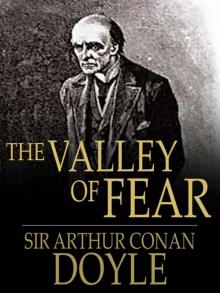 The Valley of Fear
The Valley of Fear The Last of the Legions and Other Tales of Long Ago
The Last of the Legions and Other Tales of Long Ago The Dealings of Captain Sharkey, and Other Tales of Pirates
The Dealings of Captain Sharkey, and Other Tales of Pirates The Hound of the Baskervilles
The Hound of the Baskervilles The Great Shadow and Other Napoleonic Tales
The Great Shadow and Other Napoleonic Tales The Adventure of the Dying Detective
The Adventure of the Dying Detective The Man from Archangel, and Other Tales of Adventure
The Man from Archangel, and Other Tales of Adventure The Poison Belt
The Poison Belt The Last Galley; Impressions and Tales
The Last Galley; Impressions and Tales The Adventure of Wisteria Lodge
The Adventure of Wisteria Lodge The White Company
The White Company The Mystery of Cloomber
The Mystery of Cloomber The Adventure of the Bruce-Partington Plans
The Adventure of the Bruce-Partington Plans The Adventure of the Cardboard Box
The Adventure of the Cardboard Box Danger! and Other Stories
Danger! and Other Stories Sir Nigel
Sir Nigel The Return of Sherlock Holmes
The Return of Sherlock Holmes The Adventure of the Devil's Foot
The Adventure of the Devil's Foot The Adventure of the Red Circle
The Adventure of the Red Circle The Memoirs of Sherlock Holmes
The Memoirs of Sherlock Holmes The Adventure of the Yellow Face
The Adventure of the Yellow Face The Adventure of the Norwood Builder
The Adventure of the Norwood Builder Mysteries of Sherlock Holmes
Mysteries of Sherlock Holmes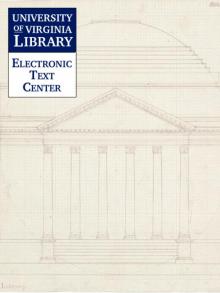 The Adventure of the Missing Three-Quarter
The Adventure of the Missing Three-Quarter The Adventure of the Final Problem
The Adventure of the Final Problem A Scandal in Bohemia
A Scandal in Bohemia His Last Bow shssc-4
His Last Bow shssc-4 Beyond The City
Beyond The City The Adventure of the Gloria Scott
The Adventure of the Gloria Scott The Parasite
The Parasite The Land Of Mist pcs-3
The Land Of Mist pcs-3 The Adventure of the Musgrave Ritual
The Adventure of the Musgrave Ritual The Complete Sherlock Holmes, Volume I (Barnes & Noble Classics Series)
The Complete Sherlock Holmes, Volume I (Barnes & Noble Classics Series) The Adventure of the Stockbroker's Clerk
The Adventure of the Stockbroker's Clerk The Adventure of the Copper Beeches
The Adventure of the Copper Beeches The New Annotated Sherlock Holmes
The New Annotated Sherlock Holmes When The World Screamed pcs-5
When The World Screamed pcs-5 The Adventure of the Six Napoleons
The Adventure of the Six Napoleons The Case Book of Sherlock Holmes shssc-5
The Case Book of Sherlock Holmes shssc-5 The Sign of Four
The Sign of Four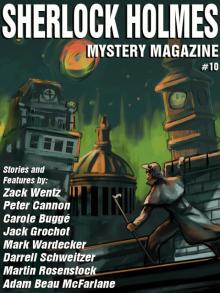 Sherlock Holmes Mystery Magazine #10
Sherlock Holmes Mystery Magazine #10 The Adventures of Brigadier Gerard
The Adventures of Brigadier Gerard The Adventure of the Second Stain
The Adventure of the Second Stain The Adventure of the Engineer's Thumb
The Adventure of the Engineer's Thumb The Mummy Megapack
The Mummy Megapack The Disintegration Machine pcs-4
The Disintegration Machine pcs-4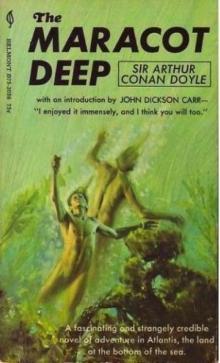 The Maracot Deep
The Maracot Deep The Five Orange Pips
The Five Orange Pips The Adventure of the Crooked Man
The Adventure of the Crooked Man The Adventure of the Blue Carbuncle
The Adventure of the Blue Carbuncle The Adventure of Silver Blaze
The Adventure of Silver Blaze The Adventure of the Solitary Cyclist
The Adventure of the Solitary Cyclist The Adventure of the Naval Treaty
The Adventure of the Naval Treaty Sherlock Holmes. The Complete Stories
Sherlock Holmes. The Complete Stories The Adventures of Sherlock Holmes (sherlock holmes)
The Adventures of Sherlock Holmes (sherlock holmes) The Adventure of the Empty House
The Adventure of the Empty House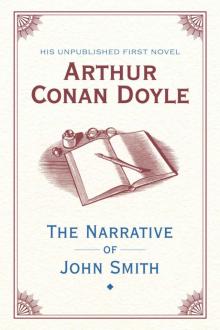 The Narrative of John Smith
The Narrative of John Smith The Return of Sherlock Holmes (sherlock holmes)
The Return of Sherlock Holmes (sherlock holmes) The New Revelation
The New Revelation A Study in Scarlet (sherlock holmes)
A Study in Scarlet (sherlock holmes) The Vital Message
The Vital Message Sherlock Holmes Complete Collection
Sherlock Holmes Complete Collection Round the Red Lamp
Round the Red Lamp The Boscombe Valley Mystery
The Boscombe Valley Mystery The Adventure of the Beryl Coronet
The Adventure of the Beryl Coronet The Refugees
The Refugees The Adventure of the Three Students.
The Adventure of the Three Students.